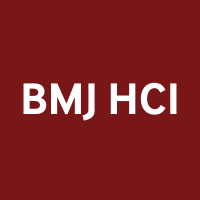
Abstract
BACKGROUND AND AIMS: Most patients with heart failure (HF) are diagnosed following a hospital admission. The clinical and health economic impacts of index HF diagnosis made on admission to hospital versus community settings are not known.
METHODS: We used the North West London Discover database to examine 34 208 patients receiving an index diagnosis of HF between January 2015 and December 2020. A propensity score-matched (PSM) cohort was identified to adjust for differences in socioeconomic status, cardiovascular risk and pre-diagnosis health resource utilisation cost. Outcomes were stratified by two pathways to index HF diagnosis: a 'hospital pathway' was defined by diagnosis following hospital admission; and a 'community pathway' by diagnosis via a general practitioner or outpatient services. The primary clinical and health economic endpoints were all-cause mortality and cost-consequence differential, respectively.
RESULTS: The diagnosis of HF was via hospital pathway in 68% (23 273) of patients. The PSM cohort included 17 174 patients (8582 per group) and was matched across all selected confounders (p>0.05). The ratio of deaths per person-months at 24 months comparing community versus hospital diagnosis was 0.780 (95% CI 0.722 to 0.841, p<0.0001). By 72 months, the ratio of deaths was 0.960 (0.905 to 1.020, p=0.18). Diagnosis via hospital pathway incurred an overall extra longitudinal cost of £2485 per patient.
CONCLUSIONS: Index diagnosis of HF through hospital admission continues to dominate and is associated with a significantly greater short-term risk of mortality and substantially increased long-term costs than if first diagnosed in the community. This study highlights the potential for community diagnosis-early, before symptoms necessitate hospitalisation-to improve both clinical and health economic outcomes.
